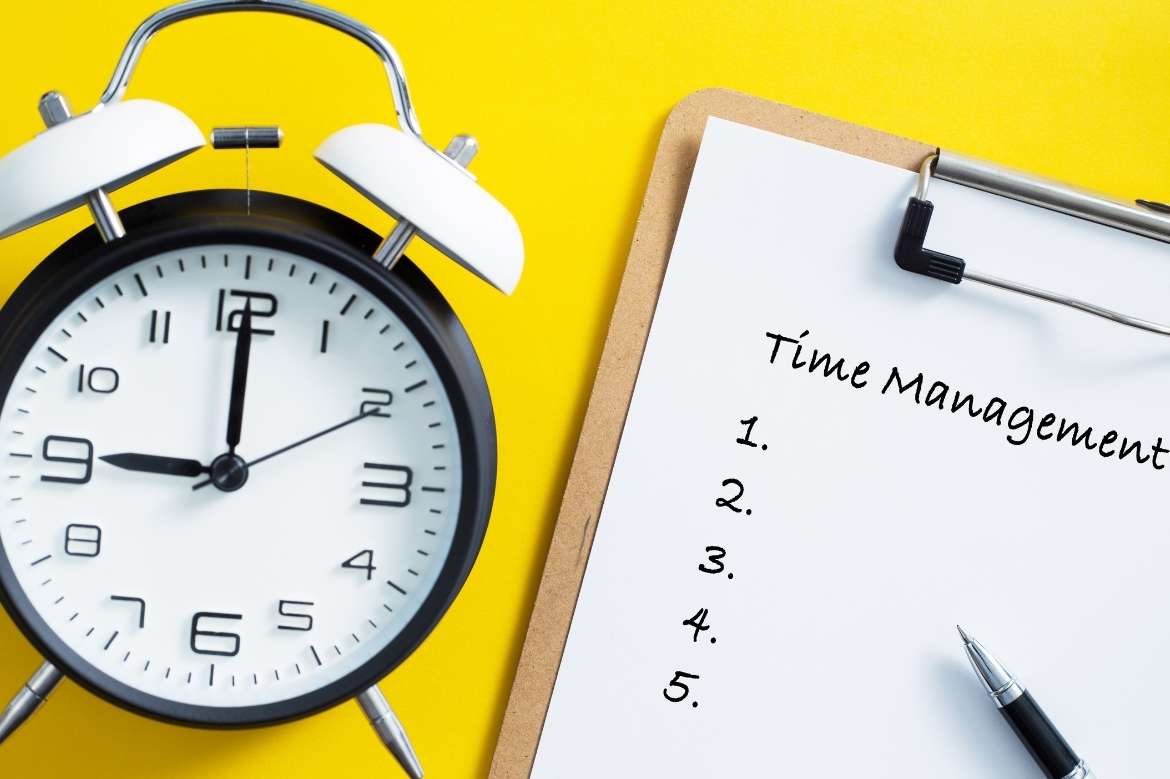Working from home – the ideal situation for many. And what is wrong with not sitting in a stuffy office in stiff work clothes and escaping the daily commute madness? Many studies show that workers who work from home are more productive – but achieving high productivity levels requires solid time management skills.
Working from home has many advantages, but it is not necessarily easier than working in the office. It can lead to increased stress and pressure as you have to be very disciplined and planned – the potential distractions are too great. Despite or perhaps because of the flexibility of working hours, you need a stricter working framework in the home office. With this in mind, here are five rules of conduct that will help you to use your working time productively in the home office:
Table of Contents
“Please Do Not Disturb!”
Probably the biggest problem in the home office is at home. When you drive to the office, to the construction site or the production hall, the change of location usually puts you in the right mood for the tasks that need to be done. You are at work both mentally and physically.
Anyone who works from home must also switch to work mode. This includes a very clear distinction from family life, leisure time, housework, etc. This setting includes communicating to family members or roommates: “I work now; please don’t bother me.” Set working hours and stick to them.
Stick To Your Schedule
The flexibility that you have in the home office is only available in a few professions. You can set your working hours according to your biorhythm, for example – morning grouches start at 10 a.m., night owls don’t get going until around 4 p.m. and finish their workload by 2 a.m., while morning people were productive for two hours at 7 a.m.
The important thing is that you stick to the schedule that you have set up. Like in the office, you set appointments, set a time frame for tasks and plan buffer times for unplanned tasks such as phone calls.
Take Breaks And
After work For many in the home office, it is easier to rush into work than take breaks. Often the motto is “My working day is only over when work is over.” There is no possibility of clocking out, which is the standard in many companies. It is therefore essential to plan breaks! Enter breaks in your calendar as well as tasks or appointments and set daily limits. After all, in the office, you would also take a short coffee break with your colleagues.
The same goes for after work. It is especially tempting for people without children or partners to work as much and as long as possible. Avoid this by entering your leisure activities as equivalent dates in your schedule.
Keep Your Workplace Tidy
Tidiness is half the battle. Our grandma already knew, and she was right. And the chaos continues in the confusing folder structure on your computer and the e-mail inbox? Three empty coffee cups, a half-finished roll, next to it, two stacks of documents of different heights and somewhere in between the phone.
Then it’s time to clean up as soon as possible! The goal must be that you have everything you need in your daily routine to hand in and that you can quickly find anything else for reference or reuse.
Use Tools
This does not mean energy drinks, but tools, methods or software programs that make your workflow easier and help you structure your working day better. You might think that you don’t need all the expensive bells and whistles such as software, whiteboards, standardized procedures, folders and labels in the home office. And you are right. You often only need a single but good tool.
A digital time recording for your tasks, for example, or a clear calendar software with a notification function makes task management easier. For complex projects, a planning tool is useful that gives an overview of progress and dependencies, ideally including the display of the critical path.
Also Read: VIRTUAL PROJECT MANAGEMENT




